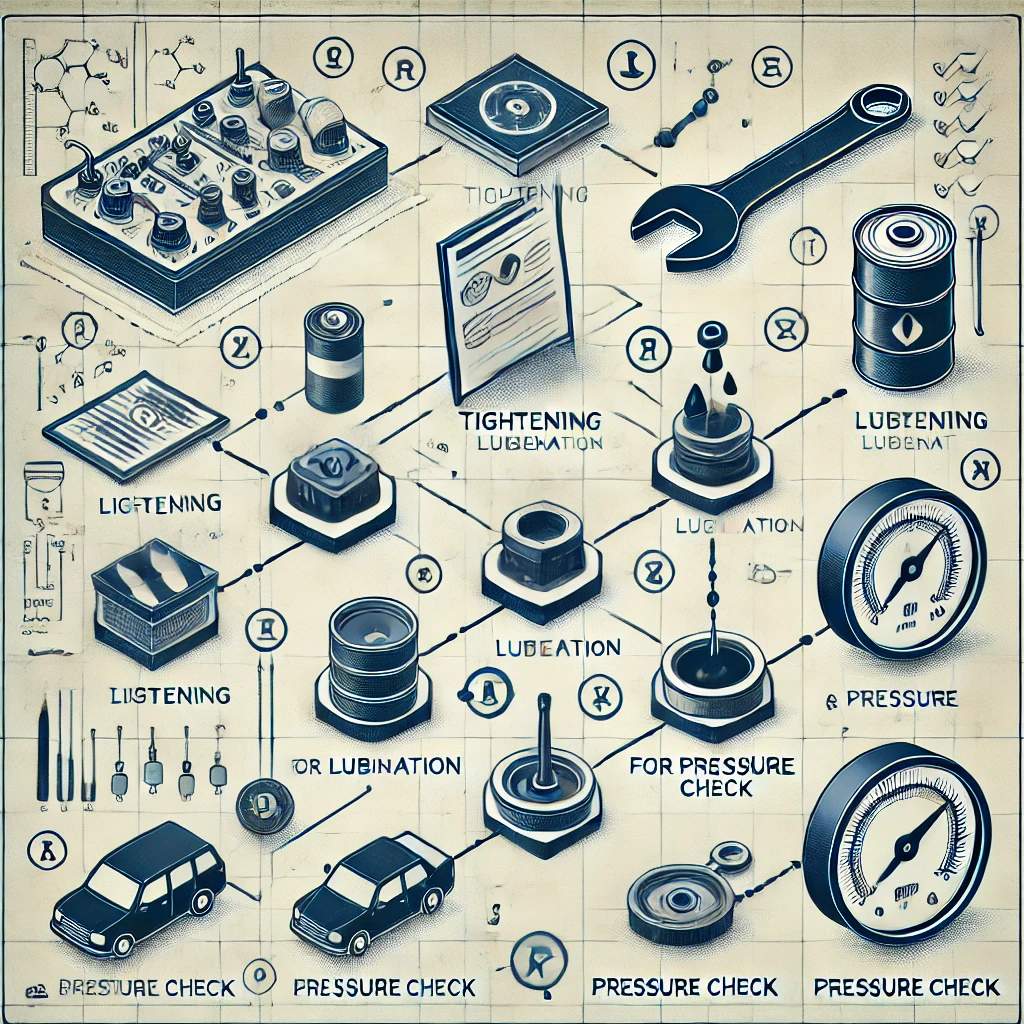
Inspect hydraulic fluid level
Ensure the fluid level is within the recommended range. Low levels may indicate leaks or excessive usage.
Check for leaks in hoses and connections Look for signs of fluid accumulation, worn-out seals, or damaged connections. Tighten loose fittings if necessary.
Replace worn-out seals and gaskets
Over time, rubber seals degrade, leading to leaks. Replace them periodically to prevent system failures.
Clean or replace hydraulic filters
Clogged filters reduce efficiency and can cause overheating. Inspect and replace filters as per the manufacturer’s schedule.
Inspect hydraulic pump operation
Listen for unusual noises, vibrations, or fluctuations in pressure, which may indicate pump wear.
Test system pressure
Use a pressure gauge to ensure the system maintains optimal pressure levels.
Verify actuator performance
Check that hydraulic cylinders and actuators operate smoothly without jerking movements.
Lubricate moving parts
Proper lubrication reduces friction and prolongs component lifespan. Use manufacturer-recommended lubricants.

tests